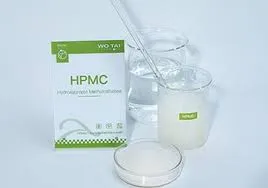
Oct . 19, 2024 02:09 Back to list
liquid thickener
Understanding Liquid Thickeners A Comprehensive Guide
Liquid thickeners play a crucial role in a variety of industries, including food and beverage, pharmaceuticals, and personal care products. These substances are designed to alter the viscosity of liquids, making them thicker and more cohesive. This property is particularly important in applications where texture, stability, and mouthfeel are paramount.
One of the primary reasons for using liquid thickeners is to enhance the texture of products. In the food industry, for instance, thickeners can improve the mouthfeel of sauces, soups, and gravies, making them more palatable. Thicker liquids can also aid in maintaining the stability of a product, preventing ingredients from separating and ensuring uniformity. In the pharmaceutical sector, thickeners can enhance the efficacy of liquid medications, providing a more consistent and effective dosing mechanism.
Liquid thickeners come in various forms, ranging from natural to synthetic options. Common natural thickeners include starches (such as cornstarch or tapioca), gums (like xanthan gum and guar gum), and pectins. These thickeners are favored for their clean label attributes and their ability to form gels or pastes when combined with liquids. Starches, for example, gelatinize when heated, thickening soups and sauces effectively while providing a glossy finish.
On the other hand, synthetic thickeners, such as hydroxypropyl methylcellulose (HPMC) and carboxymethylcellulose (CMC), are often used for their specific properties, like heat stability and resistance to shear forces. These thickeners are particularly popular in industrial applications and can offer consistent performance across a range of conditions.
liquid thickener

When formulating with liquid thickeners, it’s essential to consider the desired outcome. For example, a high-viscosity thickener might be ideal for creating a stable sauce, while a low-viscosity option could be more suitable for a dressing. Additionally, thickeners can interact with other ingredients, affecting the overall formulation. It’s crucial to conduct rigorous testing to ensure compatibility and performance.
In the field of personal care products, liquid thickeners are used to enhance the texture and stability of lotions, shampoos, and other formulations. They promote a luxurious feel and can prevent ingredients from settling, ensuring a uniform application. Just like in food, the right thickener can elevate the user experience and improve product effectiveness.
Thickening agents must also comply with safety regulations, especially in food and pharmaceutical applications. Manufacturers need to ensure that their chosen thickeners are safe for consumption or topical use and meet industry standards.
In conclusion, liquid thickeners are versatile agents that serve multiple purposes across various industries. Whether you are working in food production, pharmaceuticals, or personal care, understanding the properties and applications of different thickeners can help you create better, more stable products. By carefully selecting the appropriate thickener and optimizing your formulations, you can enhance the overall quality and effectiveness of your offerings, ultimately leading to greater customer satisfaction.
-
Versatile Hpmc Uses in Different Industries
NewsJun.19,2025
-
Redispersible Powder's Role in Enhancing Durability of Construction Products
NewsJun.19,2025
-
Hydroxyethyl Cellulose Applications Driving Green Industrial Processes
NewsJun.19,2025
-
Exploring Different Redispersible Polymer Powder
NewsJun.19,2025
-
Choosing the Right Mortar Bonding Agent
NewsJun.19,2025
-
Applications and Significance of China Hpmc in Modern Industries
NewsJun.19,2025







